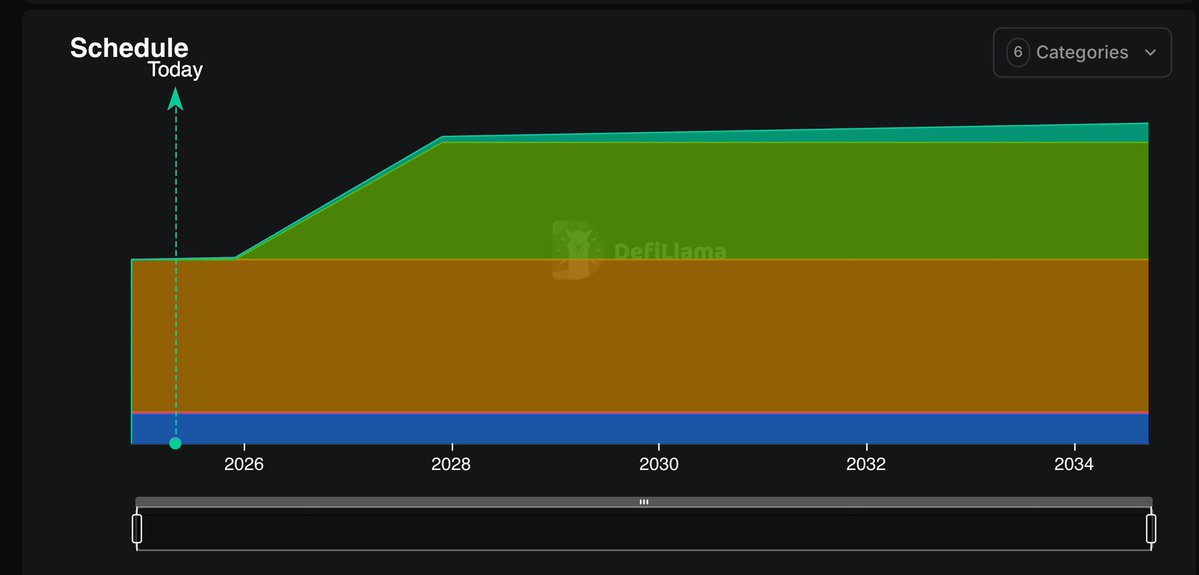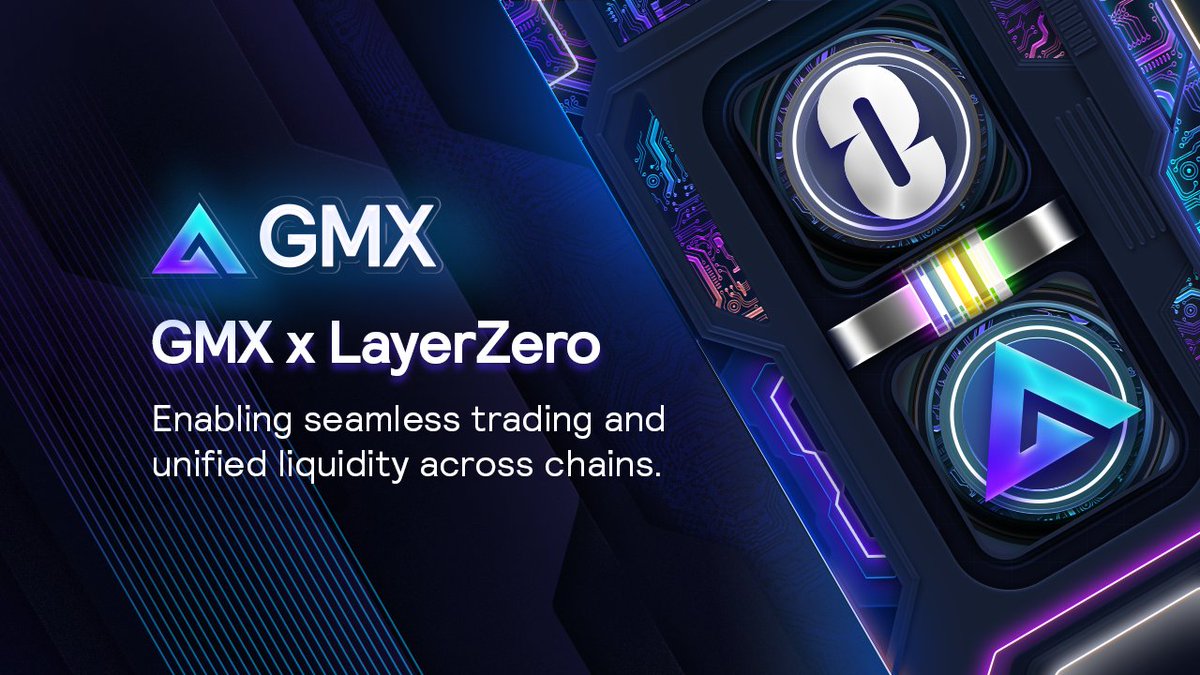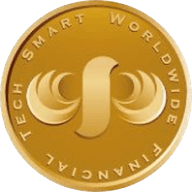
GMX
GMX price
$13.2900
+$0.100000
(+0.75%)
Price change from 00:00 UTC until now

How are you feeling about GMX today?
Share your sentiments here by giving a thumbs up if you’re feeling bullish about the coin or a thumbs down if you’re feeling bearish.
Vote to view results
Disclaimer
The social content on this page ("Content"), including but not limited to tweets and statistics provided by LunarCrush, is sourced from third parties and provided "as is" for informational purposes only. OKX does not guarantee the quality or accuracy of the Content, and the Content does not represent the views of OKX. It is not intended to provide (i) investment advice or recommendation; (ii) an offer or solicitation to buy, sell or hold digital assets; or (iii) financial, accounting, legal or tax advice. Digital assets, including stablecoins and NFTs, involve a high degree of risk, can fluctuate greatly. The price and performance of the digital assets are not guaranteed and may change without notice.
OKX does not provide investment or asset recommendations. You should carefully consider whether trading or holding digital assets is suitable for you in light of your financial condition. Please consult your legal/tax/investment professional for questions about your specific circumstances. For further details, please refer to our Terms of Use and Risk Warning. By using the third-party website ("TPW"), you accept that any use of the TPW will be subject to and governed by the terms of the TPW. Unless expressly stated in writing, OKX and its affiliates (“OKX”) are not in any way associated with the owner or operator of the TPW. You agree that OKX is not responsible or liable for any loss, damage and any other consequences arising from your use of the TPW. Please be aware that using a TPW may result in a loss or diminution of your assets. Product may not be available in all jurisdictions.
OKX does not provide investment or asset recommendations. You should carefully consider whether trading or holding digital assets is suitable for you in light of your financial condition. Please consult your legal/tax/investment professional for questions about your specific circumstances. For further details, please refer to our Terms of Use and Risk Warning. By using the third-party website ("TPW"), you accept that any use of the TPW will be subject to and governed by the terms of the TPW. Unless expressly stated in writing, OKX and its affiliates (“OKX”) are not in any way associated with the owner or operator of the TPW. You agree that OKX is not responsible or liable for any loss, damage and any other consequences arising from your use of the TPW. Please be aware that using a TPW may result in a loss or diminution of your assets. Product may not be available in all jurisdictions.
GMX market info
Market cap
Market cap is calculated by multiplying the circulating supply of a coin with its latest price.
Market cap = Circulating supply × Last price
Market cap = Circulating supply × Last price
Circulating supply
Total amount of a coin that is publicly available on the market.
Market cap ranking
A coin's ranking in terms of market cap value.
All-time high
Highest price a coin has reached in its trading history.
All-time low
Lowest price a coin has reached in its trading history.
Market cap
$134.65M
Circulating supply
10,116,558 GMX
76.35% of
13,250,000 GMX
Market cap ranking
--
Audits

Last audit: Jun 3, 2021
24h high
$13.4000
24h low
$12.5600
All-time high
$91.4100
-85.47% (-$78.1200)
Last updated: Apr 18, 2023
All-time low
$9.5600
+39.01% (+$3.7300)
Last updated: Apr 7, 2025
GMX Feed
The following content is sourced from .



GMX 🫐
8 major announcements from GMX in April '25 that you may have missed: 🧵
1️⃣ GMX generated ~$100 million in fees and earned ~$32 million in revenue this year, @TokenTerminal highlights.
2️⃣ The GMX DAO selects @LayerZero_Core as the preferred messaging infra provider for GMX Multichain.
3️⃣ GLV: [USDC] is live on @GMX_SOL, enabling users to provide liquidity and earn with just stablecoins
4️⃣ GMX was the largest contributor to @Arbitrum One's GDP over the past 365 days.
5️⃣ Milestone in Trading Volume: $1.01 Billion in just 24 hours
6️⃣ GMX realises the primary Perp DEX listing of the $DOLO token
7️⃣ April GMX Development Update
8️⃣ GMX looks to launch a Bitcoin-native version of its DEX on the @BotanixLabs network.
👇
21.17K
84

Duo Nine ⚡ YCC
A word of caution about Hyperliquid. Bookmark this.
I see some parallels to GMX.
Best DEX on the market, token doing great, everyone FOMOing. That’s because it’s still in the honeymoon period.
Check the vesting schedule. After 2025, it’s an uphill battle with 250 mil new tokens.
I get the hype about HYPE and its growing ecosystem. What Hyperliquid has built is impressive.
However, if their ecosystem growth cannot absorb the inflation of its token and competitors start eroding its advantages, within a year or two, it may follow GMX’s price action.
GMX pumped hard after launch, corrected 80%, then made a new ATH. After that, it was a non-stop bear market with new lows every year.
HYPE pumped hard after launch, corrected by 73% and may do a new ATH before those 250 mil vested tokens hit the orderbooks. Best to take hard profits at that point, and in any event, before 2026 hits.
DEX tokens generally have a short to medium life span before they underperform. Examples include UNI, GMX, SUSHI, 1Inch, and so on.
Hyperliquid did well to pivot beyond their DEX as that would have been insufficient to sustain 1 bil HYPE tokens.
Them locking up as many HYPE token as possible within their growing ecosystem will help, but their vesting schedule coincides with a possible bear market in the future.
Hyperliquid did many things well, but its competitive advantage will be eroded in 1-2 years as new innovators and competitors emerge.
Exchanges and trading is the most competitive market in crypto. Hope HYPE will continue to do well, but the landscape in 1-2 years will be tough, especially for a market leader in dex trading.
Plus, Hyperliquid was attacked by CEXes recently due to its growing influence. Good to be mindful of such headwinds before you ape into HYPE at $50 in the future.
People also aped into GMX at $90. See how that went. Down 90% since while BTC grinds into six digits.
Take good profits on the way up and secure them with Bitcoin. That’s the only strategy that makes you a winner long term.
Hit a follow @DU09BTC for more market insights in the future and share this message if you enjoyed reading it.

59.78K
57

Botanix Labs 🕷 reposted

GMX 🫐
GMX is becoming the go-to permissionless perpetual exchange for public blockchains.
Arbitrum, Avalanche, and Solana deployments are live. GMX Multichain will soon enable frictionless trading from popular EVM blockchains such as @Berachain, @Base, @BNBCHAIN, and others.
@LayerZero_Core's tech will allow traders to access the hundreds of millions of liquidity on the existing GMX deployments cross-chain from any supported blockchain. Seamless and secure.
A hybrid deployment on @BotanixLabs' Spiderchain - a leading Bitcoin Layer-2 that offers low fees, fast block times, and full EVM compatibility - is being realised alongside, following a recent DAO vote in favour of this proposal.

62.05K
232

Josh reposted

Josh
Will OG Defi trading make a comeback?
Here are my thoughts on $AERO vs $HYPE
Having worked in the onchain trading space since 2021, the beginning of $ARB $GMX $GNS $DYDX etc. - all of which are down bad.
Think Hyperliquid competes directly with $BNB and Binance.
Not to fud projects, but charts on OG Defi trading products do not look good.
15.91K
1
GMX price performance in USD
The current price of GMX is $13.2900. Since 00:00 UTC, GMX has increased by +0.76%. It currently has a circulating supply of 10,116,558 GMX and a maximum supply of 13,250,000 GMX, giving it a fully diluted market cap of $134.65M. At present, the GMX coin holds the 0 position in market cap rankings. The GMX/USD price is updated in real-time.
Today
+$0.100000
+0.75%
7 days
-$1.2200
-8.41%
30 days
+$2.7900
+26.57%
3 months
-$3.2400
-19.61%
Popular GMX conversions
Last updated: 05/07/2025, 18:28
| 1 GMX to USD | $13.3100 |
| 1 GMX to EUR | €11.7189 |
| 1 GMX to PHP | ₱737.65 |
| 1 GMX to IDR | Rp 220,000.0 |
| 1 GMX to GBP | £9.9816 |
| 1 GMX to CAD | $18.3702 |
| 1 GMX to AED | AED 48.8875 |
| 1 GMX to VND | ₫345,534.8 |
About GMX (GMX)
The rating provided is an aggregated rating collected by OKX from the sources provided and is for informational purpose only. OKX does not guarantee the quality or accuracy of the ratings. It is not intended to provide (i) investment advice or recommendation; (ii) an offer or solicitation to buy, sell or hold digital assets; or (iii) financial, accounting, legal or tax advice. Digital assets, including stablecoins and NFTs, involve a high degree of risk, can fluctuate greatly, and can even become worthless. The price and performance of the digital assets are not guaranteed and may change without notice. Your digital assets are not covered by insurance against potential losses. Historical returns are not indicative of future returns. OKX does not guarantee any return, repayment of principal or interest. OKX does not provide investment or asset recommendations. You should carefully consider whether trading or holding digital assets is suitable for you in light of your financial condition. Please consult your legal/ tax/ investment professional for questions about your specific circumstances.
Show more
- Official website
- Github
- Block explorer
About third-party websites
About third-party websites
By using the third-party website ("TPW"), you accept that any use of the TPW will be subject to and governed by the terms of the TPW. Unless expressly stated in writing, OKX and its affiliates ("OKX") are not in any way associated with the owner or operator of the TPW. You agree that OKX is not responsible or liable for any loss, damage and any other consequences arising from your use of the TPW. Please be aware that using a TPW may result in a loss or diminution of your assets.
GMX FAQ
How much is 1 GMX worth today?
Currently, one GMX is worth $13.2900. For answers and insight into GMX's price action, you're in the right place. Explore the latest GMX charts and trade responsibly with OKX.
What is cryptocurrency?
Cryptocurrencies, such as GMX, are digital assets that operate on a public ledger called blockchains. Learn more about coins and tokens offered on OKX and their different attributes, which includes live prices and real-time charts.
When was cryptocurrency invented?
Thanks to the 2008 financial crisis, interest in decentralized finance boomed. Bitcoin offered a novel solution by being a secure digital asset on a decentralized network. Since then, many other tokens such as GMX have been created as well.
Will the price of GMX go up today?
Check out our GMX price prediction page to forecast future prices and determine your price targets.
Monitor crypto prices on an exchange
Watch this video to learn about what happens when you move your money to a crypto exchange.
ESG Disclosure
ESG (Environmental, Social, and Governance) regulations for crypto assets aim to address their environmental impact (e.g., energy-intensive mining), promote transparency, and ensure ethical governance practices to align the crypto industry with broader sustainability and societal goals. These regulations encourage compliance with standards that mitigate risks and foster trust in digital assets.
Asset details
Name
OKcoin Europe LTD
Relevant legal entity identifier
54930069NLWEIGLHXU42
Name of the crypto-asset
GMX
Consensus Mechanism
GMX is present on the following networks: arbitrum, avalanche.
Arbitrum is a Layer 2 solution on top of Ethereum that uses Optimistic Rollups to enhance scalability and reduce transaction costs. It assumes that transactions are valid by default and only verifies them if there's a challenge (optimistic): Core Components: • Sequencer: Orders transactions and creates batches for processing. • Bridge: Facilitates asset transfers between Arbitrum and Ethereum. • Fraud Proofs: Protect against invalid transactions through an interactive verification process. Verification Process: 1. Transaction Submission: Users submit transactions to the Arbitrum Sequencer, which orders and batches them. 2. State Commitment: These batches are submitted to Ethereum with a state commitment. 3. Challenge Period: Validators have a specific period to challenge the state if they suspect fraud. 4. Dispute Resolution: If a challenge occurs, the dispute is resolved through an iterative process to identify the fraudulent transaction. The final operation is executed on Ethereum to determine the correct state. 5. Rollback and Penalties: If fraud is proven, the state is rolled back, and the dishonest party is penalized. Security and Efficiency: The combination of the Sequencer, bridge, and interactive fraud proofs ensures that the system remains secure and efficient. By minimizing on-chain data and leveraging off-chain computations, Arbitrum can provide high throughput and low fees.
The Avalanche blockchain network employs a unique Proof-of-Stake consensus mechanism called Avalanche Consensus, which involves three interconnected protocols: Snowball, Snowflake, and Avalanche. Avalanche Consensus Process 1. Snowball Protocol: o Random Sampling: Each validator randomly samples a small, constant-sized subset of other validators. Repeated Polling: Validators repeatedly poll the sampled validators to determine the preferred transaction. Confidence Counters: Validators maintain confidence counters for each transaction, incrementing them each time a sampled validator supports their preferred transaction. Decision Threshold: Once the confidence counter exceeds a pre-defined threshold, the transaction is considered accepted. 2. Snowflake Protocol: Binary Decision: Enhances the Snowball protocol by incorporating a binary decision process. Validators decide between two conflicting transactions. Binary Confidence: Confidence counters are used to track the preferred binary decision. Finality: When a binary decision reaches a certain confidence level, it becomes final. 3. Avalanche Protocol: DAG Structure: Uses a Directed Acyclic Graph (DAG) structure to organize transactions, allowing for parallel processing and higher throughput. Transaction Ordering: Transactions are added to the DAG based on their dependencies, ensuring a consistent order. Consensus on DAG: While most Proof-of-Stake Protocols use a Byzantine Fault Tolerant (BFT) consensus, Avalanche uses the Avalanche Consensus, Validators reach consensus on the structure and contents of the DAG through repeated Snowball and Snowflake.
Incentive Mechanisms and Applicable Fees
GMX is present on the following networks: arbitrum, avalanche.
Arbitrum One, a Layer 2 scaling solution for Ethereum, employs several incentive mechanisms to ensure the security and integrity of transactions on its network. The key mechanisms include: 1. Validators and Sequencers: o Sequencers are responsible for ordering transactions and creating batches that are processed off-chain. They play a critical role in maintaining the efficiency and throughput of the network. o Validators monitor the sequencers' actions and ensure that transactions are processed correctly. Validators verify the state transitions and ensure that no invalid transactions are included in the batches. 2. Fraud Proofs: o Assumption of Validity: Transactions processed off-chain are assumed to be valid. This allows for quick transaction finality and high throughput. o Challenge Period: There is a predefined period during which anyone can challenge the validity of a transaction by submitting a fraud proof. This mechanism acts as a deterrent against malicious behavior. o Dispute Resolution: If a challenge is raised, an interactive verification process is initiated to pinpoint the exact step where fraud occurred. If the challenge is valid, the fraudulent transaction is reverted, and the dishonest actor is penalized. 3. Economic Incentives: o Rewards for Honest Behavior: Participants in the network, such as validators and sequencers, are incentivized through rewards for performing their duties honestly and efficiently. These rewards come from transaction fees and potentially other protocol incentives. o Penalties for Malicious Behavior: Participants who engage in dishonest behavior or submit invalid transactions are penalized. This can include slashing of staked tokens or other forms of economic penalties, which serve to discourage malicious actions. Fees on the Arbitrum One Blockchain 1. Transaction Fees: o Layer 2 Fees: Users pay fees for transactions processed on the Layer 2 network. These fees are typically lower than Ethereum mainnet fees due to the reduced computational load on the main chain. o Arbitrum Transaction Fee: A fee is charged for each transaction processed by the sequencer. This fee covers the cost of processing the transaction and ensuring its inclusion in a batch. 2. L1 Data Fees: o Posting Batches to Ethereum: Periodically, the state updates from the Layer 2 transactions are posted to the Ethereum mainnet as calldata. This involves a fee, known as the L1 data fee, which accounts for the gas required to publish these state updates on Ethereum. o Cost Sharing: Because transactions are batched, the fixed costs of posting state updates to Ethereum are spread across multiple transactions, making it more cost-effective for users.
Avalanche uses a consensus mechanism known as Avalanche Consensus, which relies on a combination of validators, staking, and a novel approach to consensus to ensure the network's security and integrity. Validators: Staking: Validators on the Avalanche network are required to stake AVAX tokens. The amount staked influences their probability of being selected to propose or validate new blocks. Rewards: Validators earn rewards for their participation in the consensus process. These rewards are proportional to the amount of AVAX staked and their uptime and performance in validating transactions. Delegation: Validators can also accept delegations from other token holders. Delegators share in the rewards based on the amount they delegate, which incentivizes smaller holders to participate indirectly in securing the network. 2. Economic Incentives: Block Rewards: Validators receive block rewards for proposing and validating blocks. These rewards are distributed from the network’s inflationary issuance of AVAX tokens. Transaction Fees: Validators also earn a portion of the transaction fees paid by users. This includes fees for simple transactions, smart contract interactions, and the creation of new assets on the network. 3. Penalties: Slashing: Unlike some other PoS systems, Avalanche does not employ slashing (i.e., the confiscation of staked tokens) as a penalty for misbehavior. Instead, the network relies on the financial disincentive of lost future rewards for validators who are not consistently online or act maliciously. o Uptime Requirements: Validators must maintain a high level of uptime and correctly validate transactions to continue earning rewards. Poor performance or malicious actions result in missed rewards, providing a strong economic incentive to act honestly. Fees on the Avalanche Blockchain 1. Transaction Fees: Dynamic Fees: Transaction fees on Avalanche are dynamic, varying based on network demand and the complexity of the transactions. This ensures that fees remain fair and proportional to the network's usage. Fee Burning: A portion of the transaction fees is burned, permanently removing them from circulation. This deflationary mechanism helps to balance the inflation from block rewards and incentivizes token holders by potentially increasing the value of AVAX over time. 2. Smart Contract Fees: Execution Costs: Fees for deploying and interacting with smart contracts are determined by the computational resources required. These fees ensure that the network remains efficient and that resources are used responsibly. 3. Asset Creation Fees: New Asset Creation: There are fees associated with creating new assets (tokens) on the Avalanche network. These fees help to prevent spam and ensure that only serious projects use the network's resources.
Beginning of the period to which the disclosure relates
2024-04-20
End of the period to which the disclosure relates
2025-04-20
Energy report
Energy consumption
2660.23259 (kWh/a)
Energy consumption sources and methodologies
The energy consumption of this asset is aggregated across multiple components:
To determine the energy consumption of a token, the energy consumption of the network(s) arbitrum, avalanche is calculated first. Based on the crypto asset's gas consumption per network, the share of the total consumption of the respective network that is assigned to this asset is defined. When calculating the energy consumption, we used - if available - the Functionally Fungible Group Digital Token Identifier (FFG DTI) to determine all implementations of the asset of question in scope and we update the mappings regulary, based on data of the Digital Token Identifier Foundation.













Socials